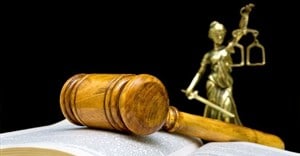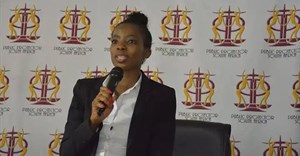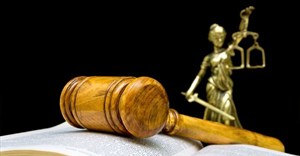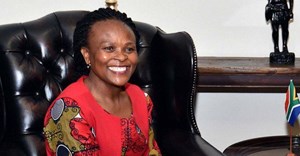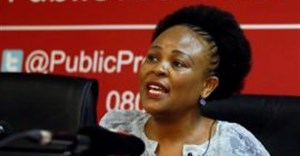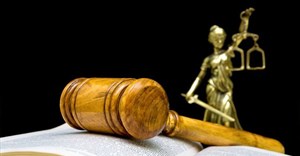
Subscribe & Follow
Storm around South Africa's public protector shows robustness, not a crisis
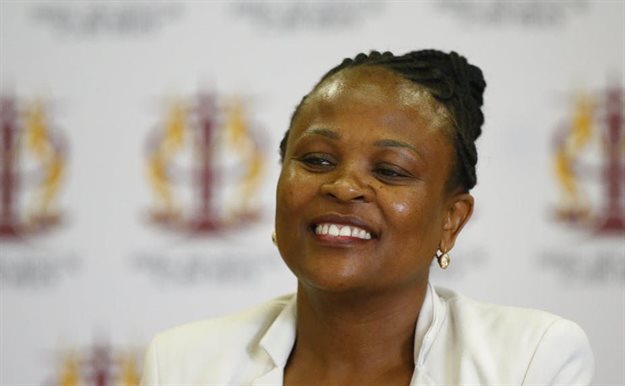
In her response to the Bank’s application to set aside certain remedial action, the Court found that the Public Protector, Busisiwe Mkhwebane, acted in such bad faith as to justify the imposition of a personal costs order.
The Public Protector’s office, previously lauded for its investigation into the illegal use of public money on former President Jacob Zuma’s private Nkandla homestead, is consequently now the subject of anxious public debate.
The big worries
Two concerns, in particular, have been raised.
The first has to do with whether the Constitutional Court’s decision reveals any flaws in the design of the country’s 1996 Constitution.
Should such significant powers have been invested in the Public Protector’s office when, as we can now see, they are vulnerable to abuse?
The second concern relates to the raft of litigation in which the Public Protector is involved, and Mkhwebane’s own recent threat to go to court to oppose any attempt by Parliament to remove her.
Is this yet more evidence of the descent of the country’s constitutional democracy into so-called “lawfare”?
Constitutional design flaws?
The Public Protector’s powers are set out in Section 182(1)(a) of the Constitution. It states the office is there
to investigate any conduct in state affairs, or in the public administration in any sphere of government, that is alleged or suspected to be improper or to result in any impropriety or prejudice.
The more important section perhaps is section 194, on the removal of the Public Protector. It provides that this may occur “on the ground of misconduct, incapacity or incompetence”, following a committee hearing and then a two-thirds majority vote by the National Assembly.
Again, there is nothing obviously wrong with this provision. Design the removal procedure in a way that makes it too easy to activate and you weaken the institution. Make it too hard to use and you licence an individual to become a loose cannon. Section 194 seems to get this balance right.
Beyond this, the proper functioning of the Public Protector’s office depends on two things: the courts’ preparedness to use their review powers to overturn any unwarranted findings and informed public scrutiny of the Public Protector’s actions. No constitutional-design features, however prescient, can make up for the absence of those two factors.
Fortunately, South Africans know the value of judicial independence. And the example set by the previous Public Protector, Thuli Madonsela, has made them care enough about the institution to defend it when threatened.
Thus, as broad as the Public Protector’s powers are, they are tempered by powerful and independent courts and by an active and engaged civil society.
What about the second concern?
Is litigation replacing politics?
Is the current round of litigation involving the Public Protector another worrisome example of the phenomenon of lawfare?
Or does it in fact indicate something fundamental about how constitutional democracies work?
The term “lawfare” was coined by expatriate South African anthropologists Jean and John Comaroff. In its original form, it describes a situation in which the law is used to pursue political ends, both by the politically powerful and the politically weak.
The term has been popularised in South Africa by Judge Dennis Davis and lawyer Michelle Le Roux, whose recently published book deploys it as a central concept. In their usage, lawfare connotes the worrisome tendency in post-apartheid South Africa for disputes that previously would have been settled politically to be resolved legally.
The Public Protector example shows there is some empirical basis for this concern. In addition to all the litigation surrounding Nkandla and the Reserve Bank case, there are now two more judicial review applications. One involves President Cyril Ramaphosa; the other, Public Enterprises Minister Pravin Gordhan.
All of this suing and countersuing indeed looks like the waging of political battles through law. But is lawfare in this form the worrisome phenomenon it is made out to be?
The institution of constitutional review, by definition, exposes legislative and executive conduct to judicial scrutiny. It follows that the mere fact that political disputes are being waged through the courts and other constitutional institutions is not necessarily a cause for concern.
It doesn’t mean that any single instance of recourse to the courts is legally inappropriate, since such a conclusion depends on an assessment of the legal merits of the claim in each case. It also doesn’t mean that the courts are being politicised because that in the end depends on how they respond and what the public makes of their response.
On its own, therefore, the concept of lawfare has no analytic traction. It refers to a real phenomenon, but it offers no normative standard by which to assess alleged instances of the abuse of the judicial process.
Finding comfort
In the absence of a general standard, each instance of lawfare has to be assessed on its own terms. In this case, the appropriate conclusion about the Constitutional Court’s finding against the Public Protector is that there’s much to be comforted by.
The judgment – and before that, the North Gauteng High Court’s decision – shows that the judiciary is playing its appropriate role. By extending the existing provision for personal costs orders to this kind of case they have developed a midway accountability mechanism between the setting aside of the Public Protector’s remedial orders and the more drastic step, which may yet still come, of her removal from office.
If there is a concern, it is that the courts have once again been forced to act as a last line of defence. At just the time that it appeared that the Public Protector was emerging as a strong institution supporting democracy, it has been undermined by the actions of its current head.
This shows South Africa is still struggling to broaden the institutional base of its constitutional democracy so that it has multiple veto points at which to check the abuse of power.
To function effectively, constitutional institutions also need to be infused with values and traditions so that they are less dependent on the whims of particular office bearers.
This is not a uniquely South African problem. The US’s travails under President Donald Trump after 240 years of constitutional democracy are a powerful reminder that the fight for effective institutions and lived constitutional values never really ends.
Constitutionalism is an aspirational ideal in this sense, rather than a finite goal that can be achieved once and for all. Nevertheless, if the vigour of the public debate surrounding the Public Protector is anything to go by, it is an ideal that appears to be very much alive and kicking in South Africa.![]()
This article is republished from The Conversation under a Creative Commons license. Read the original article.
Source: The Conversation Africa

The Conversation Africa is an independent source of news and views from the academic and research community. Its aim is to promote better understanding of current affairs and complex issues, and allow for a better quality of public discourse and conversation.
Go to: https://theconversation.com/africa





